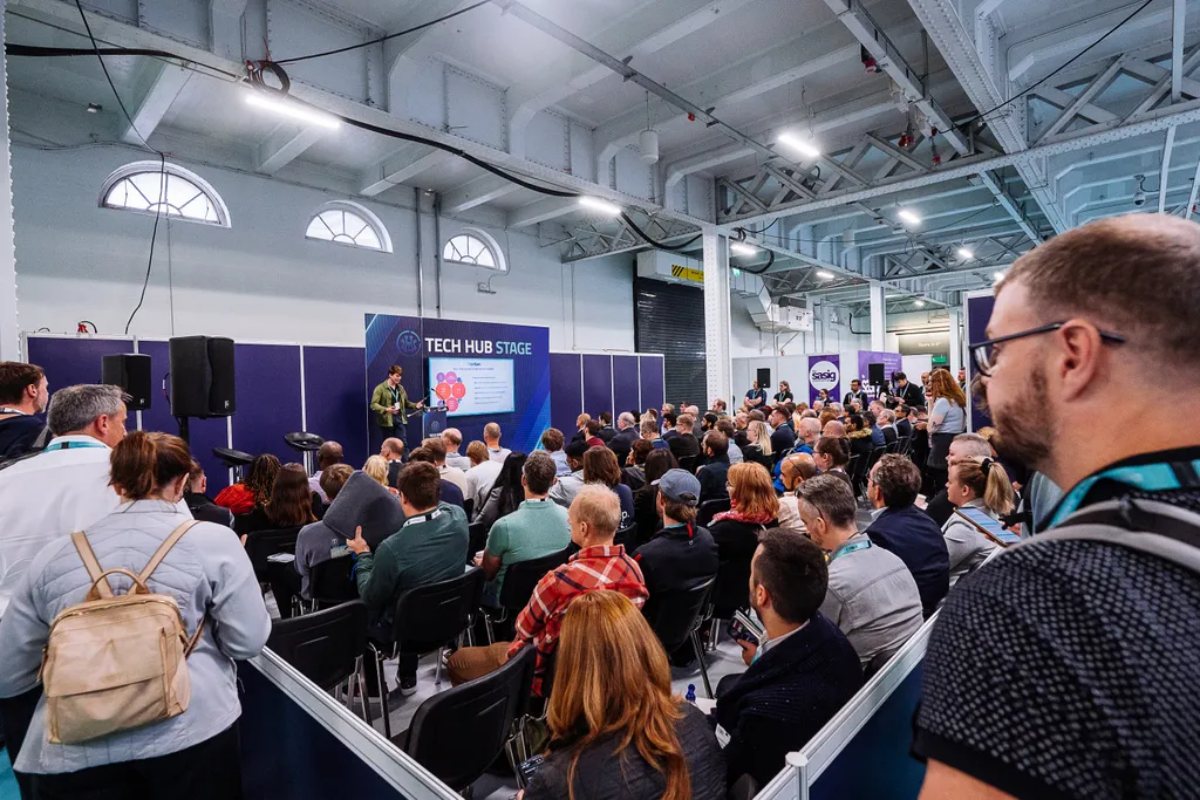Data Centre Security: Protecting Infrastructure from Physical and Cyber Threats
Data Centre Architecture Insights & Best Practices
Data Centre Build News & Insights
Data Centre Security: Protecting Infrastructure from Physical and Cyber Threats
News
Security Risk Management for Data Centre Infrastructure
AWS outage sparks call for resilient DC strategies
This Monday’s Amazon Web Services (AWS) outage demonstrates the importance of investing in resilient data centre strategies, according to maintenance specialists Arfon Engineering.
The worldwide outage saw millions unable to access popular apps and websites - including Alexa, Snapchat, and Reddit - after a Domain Name System (DNS) error took down the major AWS data centre site in Virginia.
With hundreds of platforms down for over eight hours, it was the largest internet disruption since a CrowdStrike update caused a global IT meltdown last year.
The financial impact of the crash is expected to reach into the hundreds of billions, while the potential reputational damage could be even more severe in the long run.
A preventable disaster
Although not caused by a lack of maintenance or physical malfunction of equipment and building services, the consequences of the downtime do reflect an opportunity for operators to adopt predictive maintenance strategies.
Alice Oakes, Service and Support Manager at Arfon, comments, “The chaos brought by Monday’s outage shows the sheer damage that can be caused by something as simple servers going down.
"While it might’ve been unavoidable, this is certainly not the case for downtime caused by equipment failures and reactive maintenance.
“This is where predictive maintenance can make a real difference; it's more resilient, cost-effective, and environmentally responsible than typical reactive or preventative approaches, presenting operators with the chance to stay ahead of potential issues.”
Predictive maintenance strategies incorporate condition-based monitoring (CBM), which uses real-time data to assess equipment health and forecast potential failures well in advance.
This enables informed and proactive maintenance decisions before the point of downtime, eliminating unnecessary interventions and extending asset life in the process.
CBM also reduces the frequency of unnecessary replacements, contributing to lower carbon emissions and reduced energy consumption in a sector under scrutiny for its environmental impact.
Alice continues, “This incident is a timely reminder that resilience should be built into every layer of data centre infrastructure, especially the physical equipment powering them.
"With billions set to be invested in UK data centres over the coming years, operators have a golden opportunity to future-proof their facilities.
“Predictive maintenance should be cornerstone of both new-build and retrofit facilities to adapt to ensure continuity in a sector where downtime simply isn’t an option.”
Joe Peck - 24 October 2025
Data Centre Build News & Insights
Data Centre Projects: Infrastructure Builds, Innovations & Updates
Exclusive
Security Risk Management for Data Centre Infrastructure
Pressing challenges impacting the future of US data centres
In this exclusive article for DCNN, Matt Coffel, Chief Commercial and Innovation Officer at Mission Critical Group (MCG), explores how growth in the US data centre market is being affected by increasing challenges, demanding new levels of collaboration and innovation across the sector:
An increasingly omnipresent industry
Data centres and related facilities are everywhere today. Synergy Research Group states hyperscalers account for 44% of those facilities worldwide, while non-hyperscale colocation and on-premise account for 22% and 34% respectively. They also project that by 2030, hyperscalers will account for 61% of all data centres and related facilities.
While there are no definitive estimates on how many of these facilities will be constructed in the US in the coming years, planning and development in the country are happening faster than ever before. Take, for example, the recent developments in Pennsylvania regarding investment in data centres and other technology infrastructure to support AI, including significant investments from Amazon and CoreWeave.
With AI adoption surging and data generation accelerating in sectors like healthcare, financial services, and the federal government, the number of data centres is only set to grow. But as demand rises, so too do the obstacles. Data centre operators and their partners face mounting challenges that threaten timelines, drive up costs, and complicate efforts to scale efficiently - and there are no easy fixes.
Persistent and critical challenges
When it comes to the construction of a data centre, there are many factors to consider. However, four factors have emerged as critical challenges for data centre operators and their partners: permitting, power, skilled talent, and compute.
1. Regulation: Securing permits to build and operate
Even as demand for compute and power accelerates, operators are forced to navigate lengthy and often inconsistent approval processes. In some jurisdictions, permitting can take two to three years before projects can even break ground. These delays put US developers at a disadvantage compared to countries with more streamlined regulatory systems.
The challenge is compounded by the sheer scale of today’s facilities. Projects promising multiple gigawatts of capacity require not only land and power, but also regulatory sign-off on issues such as environmental impact, emissions, and noise. These reviews often involve multiple parties - utilities, consultants, environmental specialists, and local governments - which makes coordination slow and uncertain. Moreover, the difficulty varies widely by location. In cities like Austin in Texas, approvals can be tough to secure, while just miles outside the city limits, the process may move much faster.
2. Time to power
According to the International Energy Agency’s (IEA) Energy and AI report, “Power consumption by data centres is on course to account for almost half of the growth in electricity demand between now and 2030 in the US.”
This rising demand is evident in Northern Virginia, where a large cluster of data centres has been built over the past twenty years. With this cluster of data centres in a single area, along with the demands from AI and data processing loads, power substations have reached maximum capacity. This has forced utility providers and data centre operators to either bring in new lines from distant locations - where there is excess power, but transmission infrastructure is lacking - or to build new data centres in rural areas so they can access untapped power.
Yet, building new transmission lines from other locations or setting up data centres can take years and doesn’t address the current power demand.
3. Access to skilled talent to support current and future projects
Data centre operators and their partners are working to build new facilities across the US, often in remote parts such as Western Texas, where they can access untapped power sources. Building in these areas introduces several challenges related to skilled labour.
Building and maintaining a data centre requires highly skilled electricians, mechanics, and controls specialists who can handle complex electrical and mechanical systems and often on-site power generation. However, the US faces a nationwide shortage of these workers. The US Bureau of Labor Statistics forecasts that employment for electrical workers will grow by 11% from 2023 to 2033 - a much faster rate than the average for all jobs. Still, many electricians are nearing retirement and set to leave the field in the coming years. This is likely to create a gap that operators will find difficult to fill as they work to build and keep their facilities running.
Additionally, data centre operators and their partners face the reality that many skilled workers are unwilling to live far from population centres.
Recent estimates from Goldman Sachs Research underscore the scale of this challenge. It projects that the US will require 207,000 more transmission and interconnection workers and 300,000 extra jobs in power technologies, manufacturing, construction, and operations to support the additional power consumption needs projected for the US by 2030.
This dual challenge of labour scarcity and logistical complexity is making traditional, on-site construction methods increasingly untenable. As a result, the industry is pivoting towards prefabricated, modular power solutions that are engineered and assembled in a controlled factory environment. This approach mitigates the impact of localised labour shortages by capitalising on a centralised, highly skilled workforce and deploying nearly complete, pre-tested power modules to the remote data centre location for rapid and simplified final installation.
4. The accelerating pace of change in compute technology
The speed at which compute technology is evolving has reached an unprecedented level, putting enormous pressure on data centre operators and their partners.
Moore’s Law is no longer the standard; today’s compute configurations are far more advanced than ever before, with denser platforms being released every 12 to 18 months. This rapid cycle forces operators to rethink how they design and future-proof facilities - leveraging concepts such as modularisation - as infrastructure built just a few years ago can quickly fall behind.
The need for collaboration
Each of these challenges is significant on its own, but together they mark one of the most complex periods in the history of infrastructure development. To move forward, data centre operators, utilities, manufacturers, technology providers, and government agencies must work closely to identify solutions and provide support for each obstacle.
On the skilled labour front, companies outside the manufacturing space are also contributing. Earlier this year, Google pledged support to train 100,000 electrical workers and 30,000 new apprentices in the US. This funding was awarded to the electrical training ALLIANCE (etA), the largest apprenticeship and training program of its kind, founded by the International Brotherhood of Electrical Workers and NECA.
State leaders are playing a role as well. In Pennsylvania this summer, for example, the governor and other legislators have demonstrated strong support for data centre growth.
MCG, a manufacturer and integrator of power and electrical systems, is one example of how industry players are stepping up. MCG designs, manufactures, delivers, and services systems tailored for data centre operators and other mission critical environments.
In collaboration with operators and other equipment and technology providers, MCG produces modular power systems that are built off-site to ease workforce constraints. These systems are then delivered directly to data centres or their power facilities, where the MCG team commissions and maintains them.
With efforts from government officials, companies like MCG and Google, and other stakeholders, the US data centre industry can continue powering the digital future - no matter how much demand for power and compute increases.
For more from Mission Critical Group, click here.
Joe Peck - 17 October 2025
Data Centre Infrastructure News & Trends
Data Centre Security: Protecting Infrastructure from Physical and Cyber Threats
Innovations in Data Center Power and Cooling Solutions
Security Risk Management for Data Centre Infrastructure
Sponsored
Uncover the hidden risks in data centre resilience
In July 2024, a lightning arrester failure in Northern Virginia, USA, triggered a massive 1,500MW load transfer across 70 data centres - handling over 70% of global internet traffic.
The result? No customer outages, but a cascade of grid instability and unexpected generator behaviour that exposed critical vulnerabilities in power resilience.
Powerside’s latest whitepaper - entitled Data Centre Load Transfer Event – Critical Insights from Power Quality Monitoring - delivers a technical case study from this unprecedented event, revealing:
• Why identical voltage disturbances led to vastly different data centre responses
• How power quality monitoring helped decode complex grid interactions
• What this means for future-proofing infrastructure in 'Data Centre Alley' and beyond
Whether you are managing mission-critical infrastructure or advising on grid stability, this is essential reading.
You can download the full whitepaper by registering below:
[ninja_form id=5]
Joe Peck - 13 October 2025
Cyber Security Insights for Resilient Digital Defence
Data Centre Infrastructure News & Trends
Data Centre Security: Protecting Infrastructure from Physical and Cyber Threats
Enterprise Network Infrastructure: Design, Performance & Security
Macquarie, Netskope partner on network security in Australia
Macquarie Telecom, an Australian provider of data centres, cloud services, cybersecurity, and telecommunications, part of Macquarie Technology Group, has announced a partnership with Netskope to simplify how Australian organisations secure and manage data, cloud, and AI applications.
The collaboration combines Netskope’s Security Service Edge (SSE) platform with Macquarie Telecom’s software-defined wide area network (SD-WAN). Together, these form a Secure Access Service Edge (SASE) framework, offering integrated networking and security functions for organisations adopting cloud services and AI.
Addressing cybersecurity pressures
Australian businesses have faced repeated data breaches in recent years, prompting tighter cybersecurity regulation and greater demands on IT teams.
The partnership aims to provide unified security and network management, helping organisations protect users and data across different environments.
Netskope’s platform consolidates web, data, cloud, and AI security into a single system, designed to reduce costs and balance protection with performance. It is IRAP-assessed at the PROTECTED level for use within Australian Government departments and critical industries.
The combined service also supports compliance with the Security of Critical Infrastructure (SOCI) Act and the Essential Eight framework.
Luke Clifton, Group Executive for Macquarie Telecom, says, “Organisations big and small are under immense pressure to strengthen their cyber defences while keeping operations simple and manageable.
"By joining forces with Netskope, we’re giving customers a smarter, more resilient network backed by integrated, enterprise-grade security. They’re getting the best of both worlds.”
Tony Burnside, Senior Vice President and Head of APAC at Netskope, adds, “Modern networks need to be both fast and secure, but many organisations are still having to accept trade-offs between performance and security.
"Networking and security consolidation is now a cornerstone of the demands of modern business, and through this partnership with Macquarie Telecom, we will help more Australian organisations unlock enhanced levels of data security.”
Netskope already works with Macquarie Government, Macquarie Telecom’s sister company, to deliver SASE technology to federal government customers. The new partnership expands that collaboration into the wider business sector.
For more from Macquarie Telecom, click here.
Joe Peck - 1 October 2025
Cyber Security Insights for Resilient Digital Defence
Data Centre Security: Protecting Infrastructure from Physical and Cyber Threats
News
Security Risk Management for Data Centre Infrastructure
Securitas partners with Rohde & Schwarz on DC security
Securitas, a global security services provider, has announced a partnership with Rohde & Schwarz to integrate millimetre wave people-screening technology into its data centre security offering.
The collaboration is aimed at strengthening protection against insider threats, data theft, and sabotage as demand for always-on digital infrastructure increases.
Millimetre wave screening for critical environments
At the core of the partnership is the use of Rohde & Schwarz’s Quick Personnel Security Scanners (QPS), which employ millimetre wave technology and artificial intelligence to detect potential threats.
Already in use by government agencies and high-security organisations, the scanners provide non-contact, safe, and accurate screening while supporting real-time decision-making by on-site security officers.
According to Securitas, the QPS improves operational flow by reducing the need for manual screening, enabling more efficient staffing models and allowing remote monitoring. The system also provides insights into alarm rates and throughput, supporting both regulatory compliance and continuity of operations.
Milton Plet, Senior Vice President and Head of Global Clients Data Center Group at Securitas, says, “This is a perfect demonstration of how technology augments - rather than replaces - human expertise.
"Our officers are still at the core of the solution, only better supported by real-time information to make even better decisions in order to protect our clients’ assets.”
Expanding security options for data centres
Andreas Haegele, Vice President of Microwave Imaging at Rohde & Schwarz, adds, “The strategic partnership with Securitas enables us to introduce our security scanners, formerly exclusive to governments, now also to data centres, where adaptability, consistency, and precision are key.
"Together we are delivering a customised, future-proof solution that adapts to both clients’ needs and the threat landscape.”
Nelson Barreto, Senior Vice President, Global Clients at Securitas Technology, argues, “By combining electronic security expertise along with our global protective services and reach, we’re delivering a smarter, more adaptive approach to securing data centres, no matter where they’re located.”
Securitas has more than 90 years of experience in protective services. By adding advanced millimetre wave screening to its multi-layered security framework, the company says it aims to enhance both resilience and efficiency in data centre operations.
For more from Securitas, click here.
Joe Peck - 26 September 2025
Cyber Security Insights for Resilient Digital Defence
Data Centre Security: Protecting Infrastructure from Physical and Cyber Threats
Exclusive
Manufacturing in the digital age
In this article, Eric Herzog, CMO at Infinidat, explores how to protect your enterprise with cyber resilient storage:
A significant transformation is underway in manufacturing enterprises, as traditional boundaries between Operational Technology (OT) and Information Technology (IT) systems rapidly dissolve. This convergence, driven as a result of ongoing digital transformation and the adoption of Industry 4.0 technology, is enabling manufacturers to achieve new levels of efficiency, productivity, and visibility across their operations.
However, as these systems become increasingly integrated, the risks - particularly in the realm of cyber security - are also escalating.
Understanding the changing landscape
Historically, manufacturers have relied on OT systems to manage their core physical processes and machinery on the factory floor, focusing on real-time control and automation. In contrast, IT systems have taken care of data processing, business operations, and enterprise resource planning requirements.
Initially, these systems would have been running independently, but in recent years, manufacturers have invested in more integrated manufacturing environments, where data flows seamlessly between shop floor equipment and enterprise systems. This integration is essential for efficiency. It enables real-time monitoring, advanced analytics, and data-driven decision-making, leading to optimised production processes and vastly improved business outcomes.
At the heart of a manufacturing business is the Manufacturing Execution System (MES). The MES connects production equipment with business applications, supporting the planning, monitoring, documentation, and control of manufacturing processes in real time. It also acts as a bridge to higher-level ERP systems and industrial automation platforms, providing comprehensive visibility and enabling enterprises to make informed, data-driven decisions. But herein lies the risk, because integration is also a somewhat double-edged sword. There are plenty of upsides, but the cyber security risks can grind an enterprise to a halt.
Integration upsides
Here are three of the immediate benefits realised through OT and IT system integration:
• Potential for real-time data analysis — Integrated OT/IT systems allow for immediate feedback and adjustments, reducing downtime and waste.
• Enhanced communication — Seamless data exchange between shop floor and enterprise systems leads to better coordination and a faster response to all issues.
• Optimised production — Enterprises can fine-tune their processes based on live data, improving quality and throughput.
Integration downsides
These operational advantages also expose manufacturers to additional cyber security threats. This question of cyber risk is for all industry sectors. The UK government’s 2024 Cyber Security Breaches Survey found that half of UK businesses experienced a cyber breach or attack in the past year, with the rate even higher among medium (70%) and large (74%) businesses.
Manufacturing enterprises are an especially attractive target for cyber criminals for multiple reasons. They rely on complex, interconnected supply chains. They tend to be running a larger number of legacy systems than other industry sectors and this can create security blind spots. They also provide a high-impact target, because a successful cyberattack can disrupt an entire supply chain.
Dealing with a cyberattack is also very costly. According to Make UK, an organisation representing manufacturers, nearly half of British manufacturers suffered cyberattacks in the previous year. A quarter reported losses between £50,000 and £250,000, and 65% experienced production downtime.
But the true costs of a cyberattack run much deeper, because many attacks involve data exfiltration. In these cases, sensitive intellectual property or customer information is stolen and potentially sold or leaked. Data breaches are one of the biggest security threats, and new research from Deloitte - conducted with the Manufacturing Leadership Council in 2024 - quantifies this. The study reported that 48% of manufacturers experienced at least one data breach in the past 12 months, at an average cost of £2.1 million per breach.
The devastating impact of storage targeted attacks
A ransomware attack on enterprise storage systems can cripple a manufacturer, potentially completely halting production processes as data and files become encrypted and inaccessible. Such an attack can also compromise the entire manufacturing operation, from design and engineering data to supply chain management information.
If key files are encrypted, the enterprise may not have access to product specifications, production schedules, and customer orders. Operations can be brought to a stand-still and the implications are far reaching, potentially also damaging long-term projects, customer relationships, and the business reputation.
Investing in cyber resilience is not just business best practice; it is mandated by law. The EU’s NIS2 directive (2024) sets strict requirements for cyber risk management in critical sectors including manufacturing. And although no longer bound by EU laws, the UK will be releasing its own regulations with the forthcoming Cyber Security and Resilience Bill, expected to be ratified later in 2025.
It is now widely accepted that, these days, it’s not a case of 'if my enterprise will be attacked', but 'when will I be attacked, how often will I be attacked, and, most importantly, how quickly can I recover?'
Cyberattacks are occurring constantly. They have become an inevitable part of being in business. As the likelihood of an attack has evolved, so too have the techniques used, and completely preventing any form of cyber security breach is no longer realistic. Instead, manufacturers should focus on building cyber storage resilience into their enterprise storage and maximising their ability to detect, respond to, and recover quickly from attacks.
Six foundations for cyber resilient storage
A cyber resilient storage infrastructure to support manufacturing business continuity is built on six key principles:
1. Immutable snapshots — Rather than creating simple backups, manufacturers need secure, unalterable data copies taken at specific intervals. These immutable snapshots ensure that critical production and business data remains unchanged after creation, providing a reliable recovery source regardless of attack sophistication.
2. Logical and remote air-gapping — Effective cyber resilient storage requires logical isolation of immutable snapshots from network access. Air-gapping - implemented locally, remotely, or both - creates an additional protection layer that keeps recovery data segregated from potential infection vectors.
3. Automated detection and response — The speed of modern cyberattacks renders manual monitoring insufficient. Manufacturing companies need automated cyber security capabilities: Automated Cyber Protection (ACP) that integrates seamlessly with their existing security stack, including Security Operations Centres (SOC); Security Information and Event Management (SIEM); and Security Orchestration, Automation, and Response (SOAR) platforms. These systems should automatically trigger immutable snapshots when security incidents are detected.
4. Fenced forensic environment — Recovery from cyberattacks requires a completely isolated network environment for forensic analysis. This 'fenced' area allows for thorough data testing and integrity verification, ensuring that recovered data isn't compromised before reintroduction to production systems.
5. Near-instantaneous recovery — Critical for manufacturing operations is the ability to retrieve clean data copies within minutes, regardless of dataset size. Manufacturing processes are particularly time-sensitive, making rapid recovery capabilities essential for minimising production disruption and financial losses.
6. Scanning for cyber threats in your storage estate — Leveraging advanced AI and ML technology, you can scan your storage at regular intervals to see if there is a cyber threat. This gives you two different advantages: First, by scanning on a regular basis, you may uncover a cyber threat. Then, you can report that to the cyber security elements in your data centre as an 'early warning system.' Second, if you have an attack, the ability to search your immutable snapshots for a dataset free from any cyberattack gives you much faster and more reliable recovery.
Road to proactive cyber storage resilience
The integration of OT and IT is transforming manufacturing and unlocking new efficiencies, but it is also heightening the cyber security risk. As cyberattacks become more frequent and sophisticated, manufacturers must adopt a proactive, resilience-focused approach to their cyber security and enterprise storage. This means investing in advanced, cyber resilient storage, with robust defences and rapid data recovery capabilities.
By prioritising these investments, manufacturing enterprises can reap all the benefits that integration offers, safeguard their operations, and protect data and intellectual property - even in the face of an increasingly hostile cyber threat landscape.
For more from Infinidat, click here.
Joe Peck - 11 September 2025
Cyber Security Insights for Resilient Digital Defence
Data Centre Security: Protecting Infrastructure from Physical and Cyber Threats
Events
Sponsored
International Cyber Expo 2025 returns
The International Cyber Expo is fast approaching, taking place 30 September - 1 October 2025 at the Olympia London.
Start planning your visit now by exploring the 2025 Event Preview and securing your free pass today.
Get ready for:
• Mind-blowing content — Three action-packed stages featuring the brightest minds in cyber security.• Next-level networking — Meet industry leaders, innovators, and peers ready to collaborate.• Innovative new features — Be the first to see what’s shaping the future of cyber security.• A packed exhibition floor — Discover ground-breaking solutions, products, and ideas, all in one place.
Be part of the most dynamic and interactive showcase in the cyber security calendar. Register for free here.
For more from the International Cyber Expo, click here.
Joe Peck - 9 September 2025
Data Centre Business News and Industry Trends
Data Centre Regulations & UK Compliance Updates
Data Centre Security: Protecting Infrastructure from Physical and Cyber Threats
Security Risk Management for Data Centre Infrastructure
4 in 5 CISOs say DeepSeek must be regulated
According to cybersecurity company Absolute Security’s UK Resilience Risk Index Report, four in five (81%) UK CISOs (Chief Information Security Officers) believe DeepSeek - a China-based AI chatbot raising global security concerns - must be urgently regulated by the UK Government before it sparks a full-scale national cyber crisis.
In response to these growing risks, over a third (34%) have implemented full bans on AI due to cyber security concerns, while 30% of CISOs say they’ve already pulled the plug on AI tools within their organisation.
The findings come from a recent survey commissioned by Absolute Security, which polled 250 UK CISOs at enterprise organisations via independent research agency Censuswide, to assess how businesses are coping with accelerating cyber challenges in an increasingly AI-powered world.
DeepSeek, the rapidly rising AI platform, has raised significant cybersecurity concerns due to its potential to expose sensitive data and be misused by cybercriminals. These issues have led organisations and governments to reconsider their cybersecurity strategies.
Businesses are already struggling to cope with the increasing complexity of cyber threats, as shown by the recent Harrods breach among others. However, as CISOs grapple with this evolving landscape, the added layer of AI-powered threats is prompting a re-evaluation of cyber defences.
Three out of five (60%) UK CISOs now predict a rise in cyber attacks as a direct result of DeepSeek, with another 60% saying this AI technology is already complicating privacy and governance frameworks, making their jobs more difficult.
These concerns reflect a clear shift in mindset, with 42% of CISOs now seeing AI as a bigger threat than a help to cybersecurity.
The readiness gap is just as concerning, with nearly half (46%) of security leaders admitting their teams are not prepared to handle AI-driven threats, such as those posed by tools like DeepSeek. The rapid development of DeepSeek is outpacing their defences, according to survey findings, creating a growing risk that many believe can only be managed through government regulation.
Andy Ward, SVP International of Absolute Security, comments, “Our research highlights the significant risks posed by emerging AI tools like DeepSeek, which are rapidly reshaping the cyber threat landscape.
"As concerns grow over their potential to accelerate attacks and compromise sensitive data, organisations must act now to strengthen their cyber resilience and adapt security frameworks to keep pace with these AI-driven threats. That’s why four in five UK CISOs are urgently calling for government regulation. They’ve witnessed how quickly this technology is advancing and how easily it can outpace existing cybersecurity defences.
"These are not hypothetical risks. The fact that organisations are already banning AI tools outright and rethinking their security strategies in response to the risks posed by LLMs like DeepSeek demonstrates the urgency of the situation.
"Without a national regulatory framework - one that sets clear guidelines for how these tools are deployed, governed, and monitored - we risk widespread disruption across every sector of the UK economy. The time for debate is over. We need immediate action, policy, and oversight to ensure AI remains a force for progress, not a catalyst for crisis.”
Despite the risks, investment in AI talent is accelerating. 84% of organisations are prioritising the hiring of AI specialists in 2025, and 80% have committed to AI training at the C-suite level, hoping that upskilling AI talent can outweigh any increasing threats.
Most companies don’t intend to retreat from AI; they want to face it head-on. To use AI safely, CISOs say they need clear rules, stronger government oversight, a skilled AI workforce, and a national plan to deal with the specific risks of DeepSeek and similar tools.
Joe Peck - 19 August 2025
Data Centre Security: Protecting Infrastructure from Physical and Cyber Threats
News
Security Risk Management for Data Centre Infrastructure
72% of organisations faced IT disruption in past year
New research released today uncovers a worrying truth: despite years of digital transformation, IT resilience remains a critical vulnerability for UK enterprises.
According to the latest research commissioned by Asanti, a UK colocation data centre provider, 72% of senior IT decision makers reported experiencing significant disruption or downtime in the past year due to IT resilience issues, with only 31% expressing extreme confidence in their current disaster recovery and business continuity plans.
The research, conducted by Vanson Bourne, surveyed 100 senior IT leaders across public and private sector organisations. The findings reveal a concerning disconnect between perceived and actual resilience performance.
Key highlights from the study
• Gaps in recovery preparedness — Only 56% of organisations surveyed have fully defined and regularly tested Recovery Time Objectives (RTOs), and just 36% say the same for Recovery Point Objectives (RPOs), which are the core thresholds set for acceptable downtime and data loss.
• Significant operational fallout — 60% of businesses struggled to return to normal operations after a major resilience disruption, while 58% admitted to suffering substantial financial losses.
• Confidence crisis in risk recovery — Over half of respondents report only low or medium confidence in handling major risks like cybersecurity breaches (54%), data centre outages (61%), or unauthorised physical access (62%).
The research also identifies a “resilience competency gap,” where critical planning, testing, and investment decisions are lagging behind the complexity and frequency of modern IT threats.
Despite widespread cloud adoption, 51% still view cloud service outages as one of the top risks to operations - surpassing even traditional IT system failures (49%).
“Too many organisations assume they’re more resilient than they actually are,” comments Stewart Laing, CEO of Asanti.
“This research makes clear that real resilience isn’t about where your systems live, it’s about how well you’ve prepared to keep them running.
"Without clearly defined recovery objectives, rigorous testing, and a culture of proactive risk management, even the most advanced infrastructure can fail. Business leaders must move beyond surface-level confidence and embed resilience into every layer of operations.”
The human factor remains a weak link
The study found that 89% of respondents believe human oversight is a critical vulnerability in their resilience strategy, while 91% agreed that operational failures due to human error could compromise backup power capabilities.
While 59% of those respondents said that they test their business continuity and disaster recovery plans at least every six months, these exercises often lack the depth required to reveal systemic resilience weaknesses.
Only 31% of respondents felt extremely confident in their current business continuity and disaster recovery plans - a sobering indicator of widespread fragility.
Businesses are not measuring the true impact of downtime
Although most firms track downtime (77%) and financial impact (73%) of resilience incidents, softer yet critical indicators like reputational impact (54%) and impact on digital transformation goals (57%) are often overlooked.
“Measurement is the foundation of resilience,” continues Stewart. “If you’re only tracking outages and costs, you’re missing the true business impact.
"Resilience must be strategic, tested, and integrated across infrastructure, operations, and leadership thinking.”
For more from Asanti, click here.
Joe Peck - 6 August 2025
Cyber Security Insights for Resilient Digital Defence
Data Centre Security: Protecting Infrastructure from Physical and Cyber Threats
Security Risk Management for Data Centre Infrastructure
Infoblox unveils 2025 DNS Threat Landscape Report
Infoblox, a provider of cloud networking and security services, today released its 2025 DNS Threat Landscape Report, revealing a dramatic surge in DNS-based cyberthreats and the growing sophistication of adversaries leveraging AI-enabled deepfakes, malicious adtech, and evasive domain tactics.
Based on pre-attack telemetry and real-time analysis of DNS queries from thousands of customer environments - with over 70 billion DNS queries per day - the report offers a view into how threat actors exploit DNS to deceive users, evade detection, and hijack trust.
"This year's findings highlight the many ways in which threat actors are taking advantage of DNS to operate their campaigns, both in terms of registering large volumes of domain names and also leveraging DNS misconfigurations to hijack existing domains and impersonate major brands," says Renée Burton, Head of Infoblox Threat Intel.
"The report exposes the widespread use of traffic distribution systems (TDS) to help disguise these crimes, among other trends security teams must look out for to stay ahead of attackers."
Research background
Since its inception, Infoblox Threat Intel has identified a total of over 660 unique threat actors and more than 204,000 suspicious domain clusters, meaning a group of domains believed to be registered by the same actor.
Over the past 12 months, Infoblox researchers have published research covering 10 new actors. They have uncovered the breadth and depth of malicious adtech, which disguises threats from users through TDS.
The report brings together findings from the past 12 months to illuminate attack trends. Particularly, the report sheds light on adtech's role in these attacks.
Top findings
• 100.8 million newly observed domains in the past year, with 25.1% classified as malicious or suspicious• 95% of threat-related domains observed in only one customer environment• 82% of customer environments queried domains associated with malicious adtech, which rotate a massive number of domains to evade security tools and serve malicious content• Nearly 500k traffic distribution system (TDS) domains were seen in the last 12 months within Infoblox networks• Daily detection of DNS Tunneling, exfiltration, and command and control, including Cobalt Strike, Sliver, and custom tools, which require ML algorithms to detect
Uptick in newly observed domains
Over the year, threat actors continuously registered, activated, and deployed new domains, often in very large sets through automated registration processes. By increasing their number of domains, threat actors can bypass traditional forensic-based defences, which are built on a "patient zero" approach to security.
This reactive approach relies on detecting and analysing threats after they have already been used somewhere else in the world. As attackers leverage increasing levels of new infrastructure, this approach becomes ineffective, leaving organisations vulnerable.
Actors are using these domains for an array of malicious purposes, from creating phishing pages and deploying malware through drive-by downloads to engaging in fraudulent activities and scams, such as fake cryptocurrency investment sites.
The need for preemptive security
These findings underscore a pressing need for organisations to be proactive in the face of AI-equipped attackers.
Investing in preemptive security can be the deciding factor in successfully thwarting threat actors.
Proactive protection, paired with consistent radar on emerging threats, tips the scales in favour of security teams — allowing them to pull ahead of attackers and interrupt their unlimited supply of domains.
Joe Peck - 4 August 2025

Head office & Accounts:
Suite 14, 6-8 Revenge Road, Lordswood
Kent ME5 8UD
T: +44 (0)1634 673163
F: +44 (0)1634 673173









